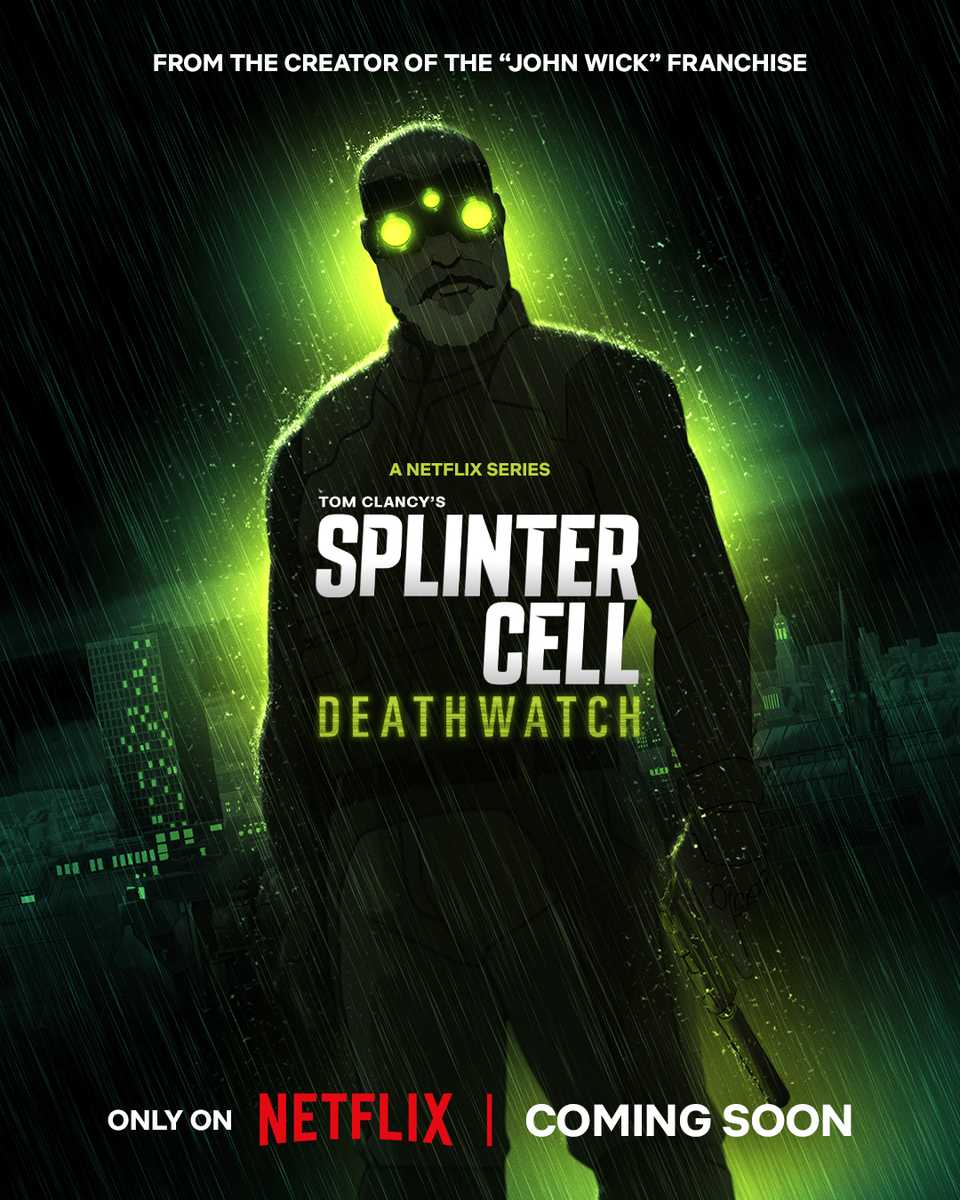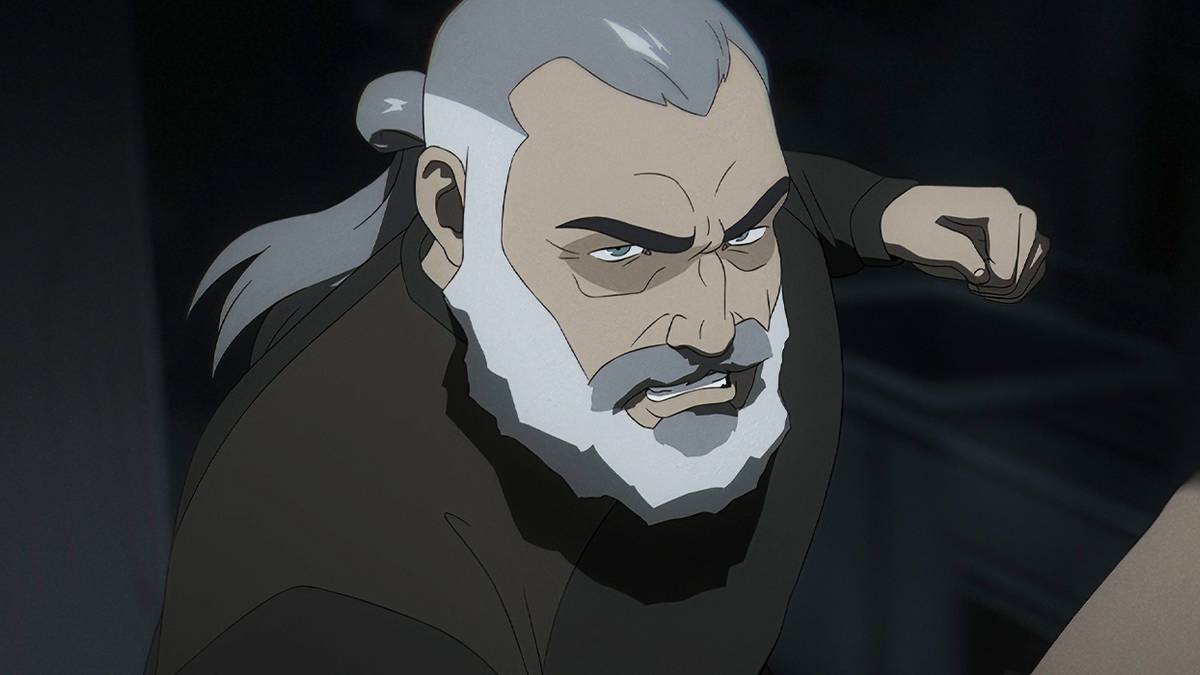In the age where video game adaptations are finally being given the justice and due diligence they deserve, Netflix has practically had the market cornered when it comes to animation. With a long list of hits, including the refreshingly accurate Castlevania, the vibrant and thrilling Devil May Cry, and the universally adored Arcane, the streamer’s shows have successfully satisfied hardcore fans as well as casual viewers. It’s no wonder that video game giant Ubisoft has decided to partner with Netflix on several screen adaptations, and while we’re still waiting to see what’s in store for Ubisoft’s golden-goose franchise, Assassin’s Creed, one series that gamers haven’t heard from in a while is returning to the public eye with Splinter Cell: Deathwatch.
An easy fan-favorite in the action-stealth genre, the Splinter Cell franchise and its main protagonist, Sam Fisher (voiced by the legendary Michael Ironside in most iterations), essentially did what the 007 films and James Bond (Sean Connery) did for movies and what 24 and Jack Bauer (Kiefer Sutherland) did for television. It revitalized the spy/espionage genre for an entirely new medium, with just about every game in the Tom Clancy-endorsed franchise garnering a dedicated fanbase for their emphasis on smart, tactical stealth gameplay as opposed to the usual running and gunning. However, despite that dedicated group of fans, the last game in the series was released over a decade ago, with Splinter Cell: Blacklist, and it’s been even longer since Ubisoft has tried to adapt the games for a new format, with a now-canceled movie set to star Tom Hardy ultimately being scrapped. Does Splinter Cell: Deathwatch finally scratch the itch that fans have had for years, or is it a standard spy thriller that just so happens to have a lot of night vision goggles?
What Is ‘Splinter Cell: Deathwatch’ About?
Right off the bat, Splinter Cell: Deathwatch is something of a departure from the games in how it follows a much older and far wiser version of Sam Fisher, voiced here by Ray Donovan star Liev Schreiber. Fisher is enjoying the closest thing a Splinter agent has to retirement when a fellow wounded operative named Zinnia McKenna (Kirby) ends up on his doorstep. She’s in rough shape after a seemingly routine mission goes horribly wrong, and now Fisher has no choice but to return to the fold to uncover a shocking global conspiracy that he has a surprising personal connection to.
Splinter Cell: Deathwatch also hails from writer and creator Derek Kolstad, who has made a major name for himself in the action genre thanks to his work on the John Wick and Nobody films. Both of those worlds were widely praised for feeling like relatively small-scale stories in a vast and expansive universe with its own set of unique rules and strictures. One would think a long-running franchise like Splinter Cell would give Kolstad a practical sandbox of ideas to play around with, especially when the sky’s the limit with an animated format. Unfortunately, Deathwatch too often feels stuck in a story that feels far too reminiscent of other spy stories, and one that could conveniently fit any spy protagonist rather than Sam Fisher specifically.
Sam Fisher, as a rough and gruff protagonist who’s been out of the game too long, is overall a passable leading hero, and Schreiber similarly fits the bill to satisfaction. Even if the characterization doesn’t feel super dynamic beyond a standard connection to the show’s overarching villain, his voice alone certainly sounds very reminiscent of Michael Ironside’s beloved rough and gruff work from the games. Still, Schreiber’s performance is so similar to Ironside’s that it may lead fans to wonder why the original voice actor didn’t return for the role, especially since this version of the character is closer to Ironside in age than the character has been in the games. The Top Gun star has reprised the character via a cameo appearance in the previous two Ghost Recon games, and Netflix has even brought back video game voice actors for new shows in the past, as they did with Doug Cockle in The Witcher: Sirens of the Deep.
Splinter Cell: Deathwatch‘s supporting characters aren’t much to write home about either. They all check the boxes of the typical spy-espionage genre crew, including the arrogant and cocky rookie, the strict leader, the self-assured veteran, and the plucky young techy. The show begins to explore more intriguing details about its villains and even sets up a potentially interesting dual dynamic, but it doesn’t feel explored enough to truly stand out.
‘Splinter Cell: Deathwatch’ Is a Technically Sound Action Series
One might think a sprawling RPG like Fallout or an open-ended sandbox like Minecraft would be among the trickiest games to adapt. When one goes to see an action movie or show, they’re likely expecting lots of fighting and big explosions, but stealth games reward extreme patience and tactical timing, often even punishing the player when they try to go guns blazing. It’s the exact reason why not one, but two attempts to make a Hitman movie fell flat: they tried to turn the title character into an over-the-top action hero when they’re supposed to be a quiet assassin who hides in plain sight.
Splinter Cell: Deathwatch doesn’t quite go to that extreme, but it kicks things off with a sleek and stylish opening sequence that effectively uses much of the franchise’s signature stealth. Sadly, that’s really the only time in the whole series where we get that type of action, as the rest of the series features many standard, though still decently animated and choreographed, fight scenes. Speaking of the animation, Splinter Cell: Deathwatch is often a decently good-looking show, even though it and the aforementioned action scenes are spliced in with an international conspiracy story that’s generic at best and hollow at worst.
The biggest issue with Splinter Cell: Deathwatch is a common problem faced by other video game adaptations, such as two other shows currently on Netflix, Resident Evil and Halo. Sure, it has some recognizable characters and iconography from the title IP, but everything else (particularly the story) feels far too disconnected. You take Sam Fisher and the night vision goggles out, and you could easily replace them with any other spy protagonist with only minimal changes. There’s nothing so outrageously offensive that it would enrage fans who are starved for more Splinter Cell content. Still, Deathwatch also lacks the same punch that has helped other video game adaptations finally gain cultural relevance.
Splinter Cell: Deathwatch is available to stream on Netflix now.

- Release Date
-
October 14, 2025
- Network
-
Netflix
-

-

Kirby Howell-Baptiste
Zinnia McKenna
- The animation is sleek. fluid, and stylish.
- Liev Schreiber fits the bill as an older Sam Fisher.
- A very generic and rudimentary spy story.
- The cast of characters are similarly underdeveloped.

